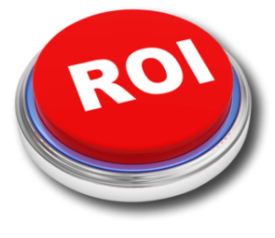Introduction:
Marketing is about reaching out to people; making them realize how a particular product can help them and thus encouraging them to invest. It is about finding an eligible customer who can invest in the company.
There are many ways to reach out to the audience. The type of marketing method depends on which kind of audience are the centers of attention. Social media marketing, email marketing, and content marketing are a few of the marketing technique usually used. Among that, email marketing has been at the top of the marketing strategy for about a decade now.

For almost every work, online services, and emails are used. Most of the companies use email marketing to promote their products and to convert a potential customer into investing customer. It is a more professional approach than to depend on social media, which appears to be a casual one.
There are about 3.9 billion email users, while FB and Twitter have 1 billion and 330 million users, respectively. Through email, one can reach more audience in comparison to other modes like Social media or door to door.
Posts in social media are less stable. It is least possible that every follower of an FB page will be able to read every post in the newsfeed. FB, with its updated algorithm, has made sure that followers of a particular page won’t be able to read its post until it is paid. With more investment and fewer chances to receive the desired result has moved strategist to email marketing.
It is more professional and the best way to reach out to the audiences. The emails will remain in the inbox until it is deleted. In addition, due to email, the number of suitable viewers has gone up. A person subscribing to a channel and agreeing to receive its newsletter shows that they are really interested in your services. It is not that easy to master — a more professional way to do marketing.
Email marketing may take some time to develop, and it is challenging to be an expert. There are many types of matrices to measure the success rate and how far the goal is. Have a look at these 16 metrics mentioned below, which you should be tracking.
Open Rate
One of the basic requirements to calculate the success rate is to understand if a subscriber is receiving the message as it is meant to be. Open rate is the simplest marketing KPI (Key Performance Indicator). It shows the number of subscribers who read the mail. It also gives the percentage of success a particular subject line copy has.
On average, a campaign has a little over 24% for their mail to be read. To accomplish the goal, a good and attractive subject line has to be constructed. A subject which addresses the individual or is short can increase its open rate and hence increase the success rate.
Click Through Rate (CTR)
It is another fundamental requirement to decide the success rate. It gives the number of subscribers who clicked on the links in the email. Like the emails which contain a lucrative offer which is about to expire or already has. These little incentives will increase the CTR. Many also use attractive and urging buttons to make the offer more irresistible.

Average CTR of any campaign is 4%; getting more than 4% means that a particular strategy is working and can create more click rate. CTR percentage is generally below the Open Rate. Better incentives, perfect placing, and relevance can also increase the clicks on links.
Click-to-open Rate (CTOR)
Click-to-open rate analyses the number of clicks with respect to the number of openings. CTOR is considered to be the most precise metric to measure the level of interaction an email can trigger. It is calculated by dividing the unique clicks obtained by the unique openings and multiplying it with 100 to get the rate. CTOR helps to measure the recipients who close the email immediately after opening it and the users who actually interact with the content and visit the website.
Conversion Rate
One of the major intentions of any mail is to lure the customer to follow a certain process. So the next step is to find out how many people completed a particular set of actions in the link provided in the mail. If anyone opened the mail, clicked on the link, and made the registration or shopping integrated with the link, then it will increase the conversion rate.

It gives the idea of how much revenue is gained from a campaign. When the calculation of the return and investment is compared, it gives insight into whether the campaign is a profit or loss. It also helps to decide if it is wise to invest in the campaign or not.
Overall ROI
ROI stands for return on investment. As the name suggests, it calculates the overall return in investment in the campaign. Money spent on executing the campaign subtracted from money made during the campaign, divided by money invested, and multiplied by 100, gives the ROI of the same campaign.

Email marketing also has some investment. Till now, it is the best way to earn a large return on investment in digital marketing. With every $1 investment, one can earn $38 of profit.
Bounce Rate
While running a campaign, it is also essential to know how many emails failed to reach their destination. Bounce rate measures the percentage of emails that could not reach their subscribers. It usually happens due to some problems with the email address and is called soft bounce. Hard bounces refer to a permanent problem.
It gives an idea about the subscriber list. High bounce rate will mainly refer to more dummy subscribers or old email ids, which are no more in use. High bounce rate can also mean a mistake in the email address. It can be avoided with double opt-in. In double opt-in, a subscriber has to confirm his/her email address after subscribing. Thus it will create a more genuine viewer list.
Number of Unsubscribes
Many times, subscribers will find their way out of the regular email updates. Though it is easy to find out the percentage of unsubscribes, it can be discouraging. The number of unsubscribes can be found in the dashboard or metric dashboard.
Many market strategists give a more optimistic approach to this problem. While in one hand a large number of unsubscribing can be discouraging at the same time, on the other hand, it can also be seen as a good thing. It indicates that the subscriber list now contains those who are really interested and amused by the work.
Giving an option to opt out from the subscription also brings trust into the relationship.
Engagement Over Time
Emails on working or college time may end up ignored. It is important to provide the email when it has the best chances of open rate and click-through rate. Tracking engagement over time gives the idea about the best time to send email to the subscribers.

Automation in the email service provider can also be used to send emails depending on customer activities. Some service provider also gathers this data to provide the best time to send out emails.
Engagement over time is as important as any other metrics. It is important to send out emails when it has a greater chance of getting read by the follower.
List Growth Rate
It gives the percentage at which the numbers of subscribers are growing. The number of unsubscribes subtracted from present subscribers, divided by the total number of subscribers and multiplied by a hundred. It gives a broad idea about the quality of the content and if the strategy is working or not.

More subscribers always do not mean a good growth rate. A low number of unsubscribes also helps in having decent viewers. A good growth rate means good strategy and execution and important content delivery to the subscribers.
Domain Open Rate
It provides the percentage of people who are opening the email on a specified email provider. It helps is figuring out the problem that may happen with a specific domain’s spam filter. It is also important to know the success rate of deliverability.
Spam Complaints
Spam complains usually happens when a subscriber moves the email from inbox to the spam. Moving to the spam box can be discouraging. It happens when the individual finds the emails irrelevant and annoying. It is healthy to get a few spams complains.
High spam complains can result in account blocked by the email service provider. Email service providers always track these complaints. It is important to keep this problem in check. Ensure that the email has no technical and copy-write issue. Giving the subscribers an option to unsubscribe may also resolve the issue.

Forwarding Rate
It measures the percentage of subscribers who forwarded the email via different modes. Sharing through social Media is common these days. It helps to get an idea on supporting subscribers. Forwarding can be a really good asset to accomplish defined goals. Almost 81% of customer purchases are encouraged by family members, friends, or colleague via social media.
Forwarding content will also help in gaining more followers and more OP and CTR.
Email Sharing Rate
Emails can be shared through different modes of communications. It can be shared through social media, emails, or messages. Email sharing rate shows the number of times an email is shared through social media but not through emails.
Different modes need different types of content, while the goal may remain the same. Sharing the same content used for forwarding emails may backfire. This gives an idea about how to make the content suitable for some of the modes of communication. It also allows for establishing an email benchmark.
Revenue Per Email and Subscriber:
Revenue per email shows the individual success of emails. Analyzing this figure helps you to figure out the best as well as the worst performing emails and helps in improving the overall ROI.
Whereas, analyzing the revenue per subscriber provides a more detailed look at your ROI. The difference that keeps it alone from revenue per email is its capacity to analyze the demographics which brings in revenue and which does not. By finding this, you can improve your emails, relocate your assets, or refocus on the demographics.
Mobile Open Rate

Development in smartphones has made it so reliable. Almost everything that was earlier operated only on the computers is now can be operated through mobiles.
Almost everyone these days also manage their email accounts through their mobile devices.
This shows the open rate of emails on the mobile. Mobile, open rates are more at weekends when people are not engaged in any kind of work.
Mobile Click Rate
Mobiles have become so reliable that they are now the best substitute for computers. They are easy to carry and operate. Mobile click rates show how many people opened the link attached with the mail in mobile.
Mobile click rates are usually low than the normal click rates. People use multiple screens, and it also depends on the network available. If the network is bad and the page takes more time to load people may change their mind and not view the link at all. To get more MCR, it is crucial to make your email engagement as simple as possible.
Conclusion:
To have a successful email marketing strategy, many of these matrices will prove to be helpful. Especially in determining how many people opened the mail, how many actually visited the link, and how many made the desired decision of registration or purchase. These also help in deciding how successful was the campaign by calculating the profit gained through it.
Email marketing can be difficult, but with these statistics, anyone can figure out a way to make their effort more profitable.
About the Author

Aditya works as a Growth Assistant at AirTract.Com, a social platform wherein people ask questions, read and write articles, share knowledge and experience. He has a Bachelor’s Degree in Computer Science Engineering and has been working in the field of Digital Marketing for the past two years. He is also a voracious reader and a big sports fan.


